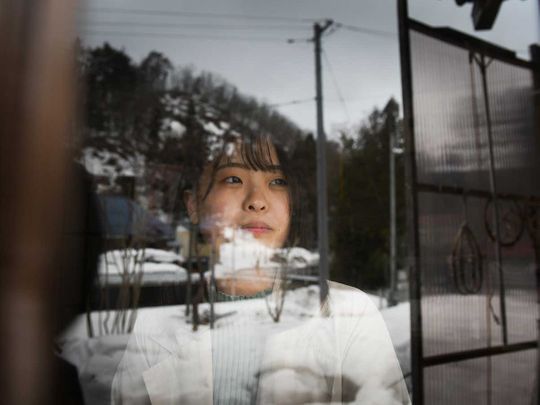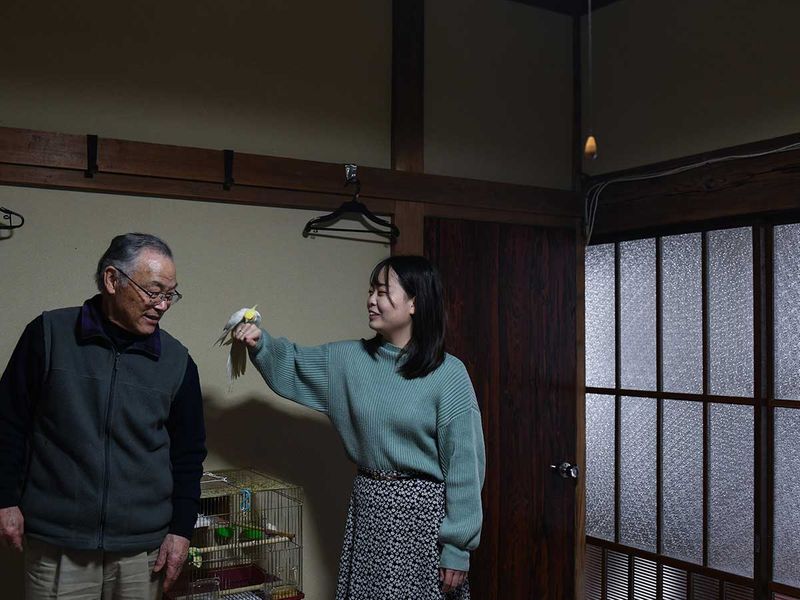
Tokyo: Rina Tsugawa recalls a charmed childhood amid rice paddies in northern Japan, hopping on bicycles with her sister and roaming the streets of their village, where monkeys sometimes descended from the mountains and neighbours offered the girls sweets as they popped into their homes.
The sisters were the only children in their hamlet in Fukushima prefecture, living with their mother and grandparents in the house where their grandfather was born. On that terrible day a decade ago when Fukushima was struck by a catastrophic earthquake and tsunami, setting off a triple meltdown at a nuclear power plant, a 12-year-old Tsugawa was at school 145km inland. As the powerful shaking jolted her sixth-grade classroom, she and her classmates hid under their desks, crying in fear.
In the years since, many of her peers have left for jobs in Tokyo and other cities, an outflow common to rural Japan but accelerated by the disaster in Fukushima. Tsugawa has different plans. After graduating this month from nursing school, she ultimately wants to return to her hometown to care for the aging residents who helped raise her.
“They gave us so much when we were little,” said Tsugawa, now 22. “I want to help these elderly people stay healthy longer.”
Japan is still grappling with the unfinished business of recovery from its worst disaster in nearly a century, which killed more than 19,000 people after a magnitude-9 earthquake on March 11, 2011, caused intensive damage across three prefectures, including Fukushima. To this day, parts of several towns near the nuclear plant remain uninhabitable.
Declining population
In Fukushima, the ongoing nuclear cleanup and efforts to revive the prefecture have played out against the backdrop of another calamity: a rapidly aging and declining population, which has hollowed out towns across the country and compounds the region’s immense challenges.
Since 2011, Fukushima’s population has contracted by 10%, compared with a 2% decrease in Japan overall. Residents older than 65 represent nearly one-third of Fukushima’s population, compared with about 29% nationally.

With its remote, mountainous location, Nishiaizu, the town that encompasses Tsugawa’s village, is similar to many greying and shrinking communities, where jobs are sparse, the lifestyle is inconvenient and birthrates are low. The town’s population, which peaked at close to 20,000 in 1950, has fallen to 6,000. Aging residents are close to half of the population, and health care workers are in short supply.
The intractable burdens facing Fukushima are not just about Japan’s deep-rooted demographic problems or even the direct effects of the tsunami’s crashing waves and the nuclear meltdowns that followed. A decade after the disaster, the prefecture is battling an indefinite blow to its reputation - a stain on the entire region that can’t easily be scrubbed away or rebuilt over.
Nuclear blight
Like Chernobyl, the prefecture has become synonymous with nuclear blight, sullying even places like Nishiaizu that were unharmed by the quake and tsunami and received far lower doses of radiation than communities closer to the coast. This stigma has only hastened the region’s depopulation.
“These are invisible damages,” said Tomoki Usuki, 72, the mayor of Nishiaizu. “It’s huge and maybe bigger than the destruction of buildings.”
Despite rigorous radiation screening, local farmers who try to sell rice and vegetables from the region, Usuki said, “are all under the Fukushima brand,” which deters consumers wary of possible contamination. China, South Korea, Hong Kong and Macao still ban imports of produce and fish from the prefecture.
Japan’s central government has worked strenuously to project the image of a region that is recovering - including plans to showcase Fukushima during the Summer Olympics - and that it says has been tarred by misinformation.
“Abolition of bias and discrimination not based on science is indispensable,” Katsuei Hirasawa, the country’s 10th minister for reconstruction since the disaster, said in a news briefing. “We must communicate that there are no safety-related issues in produce from Fukushima.”
While background levels of radiation have fallen across the prefecture and scientists have deemed short-term risks minimal, they are divided about the long-term consequences for public health.
Long-term effects
“We know relatively little about the long-term effects of exposure” to low doses of radiation, said Timothy Mousseau, a biologist at the University of South Carolina who has studied how radioactive contamination has affected animals and plants in Chernobyl and Fukushima.
As the disaster unfolded, Tsugawa did not learn just how devastating it was until her grandparents turned on the television later that afternoon. Like a horror movie on an endless loop, they watched scenes from the tsunami as it devoured the coastline. The next day, they learned of an explosion at the nuclear plant. A wall of water had knocked out the reactors’ cooling systems.
Although the residents of Nishiaizu never evacuated, Tsugawa began to read news items and social media posts insinuating that Fukushima was tainted. “There were these rumors that everyone in Fukushima was dangerous,” she recalled. “And that if you got close to them, you might get radiation sickness from them.”
When her mother, Yuki Tsugawa, took a business trip outside the prefecture about a year after the nuclear accident, someone scrawled the word “baka” - “stupid” - on the side of the car she had been driving. Tsugawa, 47, said she wondered if her Fukushima licence plate was the reason.
Her elder daughter said she had no qualms about the safety of her hometown, where she hopes someday to raise her own family. “Just because there are some areas that are not safe,” she said, “doesn’t mean that all of Fukushima is unsafe.”
With her decision to become a geriatric nurse, Rina Tsugawa is giving the prefecture exactly what it needs.
The demand for nursing care across Japan is so great that before the pandemic, the country began to relax its longtime insularity and allow more workers to be hired from other countries. In Fukushima, there is already a shortage of doctors and nurses. Kiyoshi Hanazumi, chief of the prefecture’s social welfare division, said that based on current trends, it will meet only about three-quarters of its needs for health care workers for older residents by 2025.
Rina Tsugawa, who said she wanted to specialise in caring for patients with dementia, knows her town may struggle to survive.
“Of course, I don’t want my little village to disappear,” she said. “But even if we do things to try to get new people to come, that isn’t really happening. It’s difficult to make progress.”








